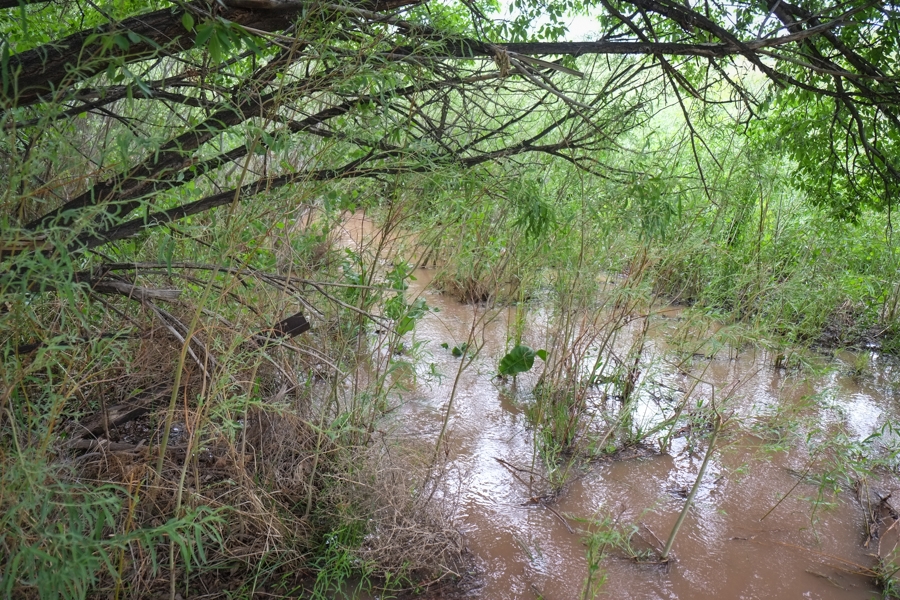Water managers increased the release this afternoon (Thurs. May 21) from Cochiti Dam into New Mexico’s Middle Rio Grande Valley to 3,000 cubic feet per second, which will increase flows yet more tomorrow through Albuquerque. As I explained yesterday, May storms and some clever water management twiddling with stored supplies is providing the opportunity for a seasonal “pulse” that looks like the largest spring flow since 2010.
I don’t want to oversell this. The Rio Grande is a system intensively managed for flood control and water delivery such that it bears little resemblance to the meandering flood plain river that once flowed through what is now Albuquerque. Its narrow central channel isolates the river from the flood plain that flanks it, where it once would regularly get up and spread across the land. But there have been modest human efforts to mimic the old natural system, using earth moving equipment to create channels and back waters that inundate at modestly higher flows like we’re seeing now. The managers are trying to take advantage of the natural flow from storms, with some added water they’re throwing in from storage on the Chama (releases from El Vado are way up) to create a miniature version of what the river once did by itself.
I spent the afternoon out looking at the results so far. Here’s one of the newly dug channels near Albuquerque’s Tingley Beach city park:


I’m sure it’s tons more fun to tinker when you got some chips to play with, so to speak. Finally. Long may it overbank.
Its a modest effort that is true. All of the data collected by researchers suggest that at least 3000 cfs for at least 3 weeks is what is needed to significantly increase chances of minnow spawning. But what happens after this modest flow spike is finished? The overbank areas will dry and any eggs/fish in them will either have to make it back to the channel or perish. The mainstem river channel will start to dry again in June and any gains from the little spike will be lost. This will likely cause the minnows to spawn, the agencies will go out and collect eggs and take to the hatcheries to raise to stock back into the river because there is no protection of flow after spring and as the channel dries so go the fish. And the crews will be out seining isolated pools to transplant the stranded fish to flowing reaches which may keep flowing, but maybe not, with no evidence that suck “salvage” has any beneficial effect. I truly appreciate what they are trying to do with the spike but it is too little too late. Hand me another bandaid please.
It is easy to think we have “so much water”..